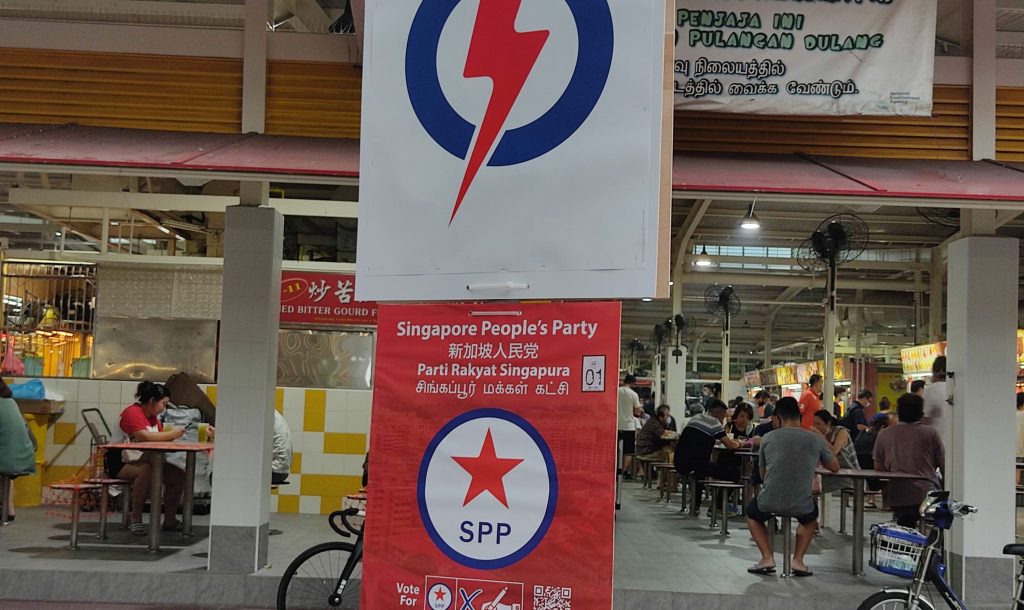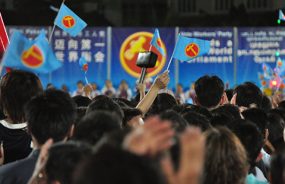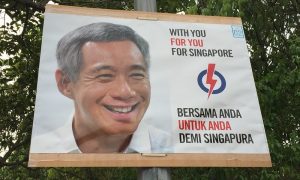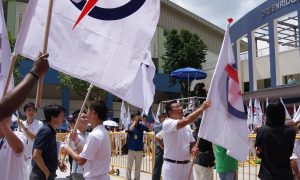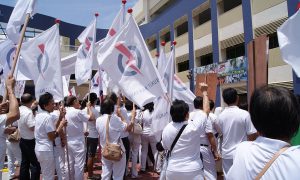Following a typically brief, nine-day campaign, Singaporeans took to the polls on 11 July. To no one’s surprise, the People’s Action Party’s (PAP), in power since 1959, won. The results might seem decidedly underwhelming elsewhere—but by Singapore standards, they are quite significant. It is not just that the PAP’s margins declined—from just under 70 percent of the popular vote in 2015 to 61.2 percent now, their third-worst showing to date—but also that so many observers (and politicians) predicted precisely the opposite. For the opposition to be wiped out, losing the 6 seats it held previously, was entirely plausible; instead, they now hold a record 10 elected seats. (Two more opposition “top losers” may now enter Parliament as non-constituency members of Parliament, NCMPs, for an assured minimum of 12 opposition representatives.)
Moreover, while only the Workers’ Party (WP) won seats (again), two other opposition parties, the new Progress Singapore Party (helmed by an 80-year old ex-PAP stalwart) and the long-standing Singapore Democratic Party, came close. Returning Prime Minister Lee Hsien Loong promptly announced that his Government will, for the first time, recognize WP Secretary-General Pritam Singh as Leader of the Opposition, complete with requisite resources and staff.
Arguably more important than the actual seat distribution, though, are the patterns we see emerging. The structure of Singapore’s electorate makes it exceptionally difficult for changes in voter sentiment, strong feelings for or against a specific candidate, or even specific policy preferences to translate into electoral wins and losses. Most importantly in that vein, beyond more run-of-the-mill endemic gerrymandering, is Singapore’s mix of single-member constituencies (SMCs) and multi-member group representation constituencies (GRCs): some votes are for a single candidate, while others are for a party bloc—invariably anchored on the PAP side by at least one incumbent cabinet minister to lend heft. Moreover, parliamentary elections double as de facto municipal elections; given Singapore’s MP-led Town Council system, voters in any given constituency are electing not only their “voice in Parliament”, but also the manager of their Housing Development Board (HDB) estate.
But we do see broad patterns in the fact that, with good reason to expect a “flight to safety” in these mid-pandemic elections, we instead saw a strong protest vote, nearly nation-wide. Moreover, beyond simple vote-tallies, engaged and critical voices were especially obvious among youth (and reducing the voting age from 21 to 18 featured on opposition platforms, making those youth voices all the more noteworthy). It matters that the breakthrough WP team is so obviously young—a personable mix of wonks and activists, unfazed by the PAP high-handedness; the PAP came off repeatedly as somewhere between smugly elitist and bullying. That impression surely reinforced the WP’s appeal to give the PAP only a mandate, not a blank cheque.
Moreover, the candidates who caught the spotlight, especially among the opposition, are neither all Chinese nor all male. Indeed, a kerfuffle over a young Malay, female WP candidate’s past social-media commentary on racial and religious discrimination in Singapore—in the context of the global reverberations of Black Lives Matter, as well as the known reality of Singapore’s own ethnic dynamics—suggested that many Singaporeans (especially those lacking Chinese privilege) would prefer to acknowledge and confront, rather than doggedly ignore, issues of race and inequality. (At the same time, several opposition platforms foregrounded a xenophobic streak, however much framed in terms of anxiety over competition for well-paying jobs.)
Clearly, a substantial share of the population wants debate, consideration of alternatives, and a shift from the conceit of “apolitical” technocratic management. The WP acknowledges that its platform is not far removed from the PAP’s, but it does lean differently—and as one of their new stars explained compellingly in a debate, that half-step left does matter in terms of priorities and whose interests take precedence. Even mere fine-tuning of policies on housing, pension funds, wage policies, and the like could be highly consequential, given the scope of the state’s role in all these domains.
Nor did the PAP succeed in making the election a fully “local” one, about which candidate or team can best manage housing estates: the leading opposition parties all sustained a refrain of accountability, transparency, and stronger democracy—even as they also touted, since they must, their commitment to walk the ground and problem-solve diligently. Indeed, in a clever twist, the WP in particular highlighted (for instance, in constituency political broadcasts) the fact that, since the PAP monopolizes “grassroots adviser” positions with the parastatal People’s Association even in constituencies they lose—and will be all the more responsive as they seek to woo those residents back—voters can have the best of both worlds.
Stale politics to get fresh in ballot defined by key battlegrounds, new contenders and old issues.
Breaking the mould: Singapore elections 2015
Perhaps most intriguing in the near term is the question of leadership. Prime Minister Lee Hsien Loong has indicated that he will steer Singapore through the COVID-19 crisis before stepping down, yet his designated successor, Heng Swee Keat, hardly shone; indeed, the GRC team he helmed barely squeaked out a win. It could also well be that the team would have sunk had the party not shifted Heng there—but the optics remain poor, especially when the more charismatic Tharman Shanmugaratnam, ruled out as PM on the premise that Singaporeans will not tolerate a non-Chinese leader in that office, performed so much better. While again, one cannot read sentiment toward any given candidate too neatly off a bloc-vote outcome, this result is hard to interpret as a strong vote of confidence in the “4G” leaders.
All told, Singaporean voters do not seem to think the PAP has all the answers. That’s hardly unusual—but it’s at odds with the PAP’s usual way of approaching the business of policymaking: their argument for decades, including throughout this campaign, has been precisely that only they have the best ideas. We are unlikely to see a sharp turn toward open parliamentary debate, but the PAP could well take to heart this message that a significant share of voters do want more voices heard, especially as it confronts the very rocky economic shoals ahead.
 Facebook
Facebook  Twitter
Twitter  Soundcloud
Soundcloud  Youtube
Youtube  Rss
Rss 